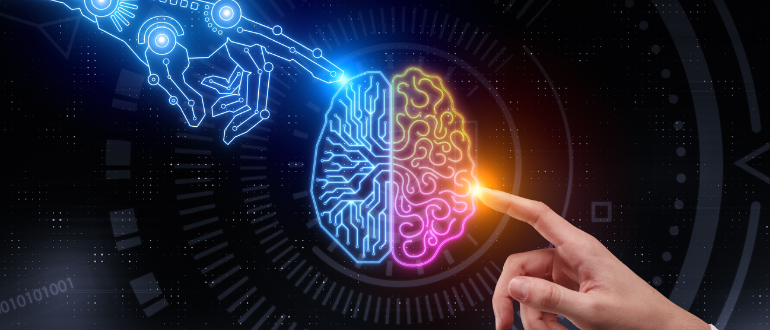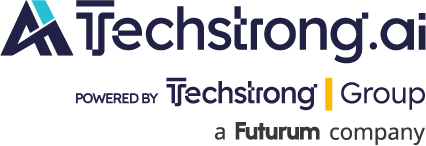
The question everyone’s asking but nobody wants to answer honestly: Is AI coming for our jobs?
As the CEO of an AI company, I get some version of this question at every meeting, every conference, every dinner party, every family gathering.
The question underneath is always even more personal: Will I have work? Will my kids? The question is urgent. It’s real. And most people giving you answers to it haven’t examined the actual data.
I have.
Here’s what I can say for certain: We are creating conditions for an AI-driven labor crisis. Jobs are at risk. Hard data shows this. It also shows that career paths are changing and disappearing. The potential crisis is not the one you think, though, or at least it’s not the cause you think.
American workers, collectively, are paid about $11 trillion dollars per year.
AI is driving potentially massive labor disruptions (some of which are already underway) because we are not understanding the ways it impacts all levels of our businesses, we are missing the opportunity to cultivate new skills in our workforce, and ultimately not doing what we can to transform the way we do business.
The Numbers Everyone Gets Wrong
Here’s a basic scorecard:
- We have about 7.4 million job openings in the U.S. right now
- About 7.2 million people are unemployed and actively looking.
- That means there are about 200,000 more jobs than those seeking them.
Sounds good, right?
Not so fast. The real picture is that there are 212 million people able to work, by economists’ estimates (and a wider universe of 275 million working-age Americans).
But only 170 million of them are in the labor force. That means that anywhere from 50-100 million people have essentially given up.
When you zoom out, that means what we’re looking at isn’t a labor shortage — it’s a matching crisis, and a rather large one at that. (One on the scale of Germany’s entire population.)
We have a mismatch economy, one with labor shortages and mass unemployment. That’s not because of abstract forces, but because of specific institutional choices we made decades ago.
Our workforce is divided into various different sectors (all of which face differing degrees of disruption from new technology). When you crunch the numbers, about 21% of our workforce is in sectors that are growing in demand (e.g. education, health, construction), about 63% are in sectors currently being transformed (everything from transportation to professional services) and 16% are in declining areas that are being quickly automated (think back office finance or e-commerce).
What AI Actually Does: The Learning Ladder Crisis
So, everyone’s asking the wrong question.
Instead of “Will AI replace jobs?” ask “Will AI eliminate the entry-level tasks that teach people how to excel at jobs?”
Based on what we can see in the data, and informed by Lanai’s work tracking how companies use AI across their organizations, we see technology is creating a potential labor issue. AI is removing the professional learning ladder and creating a learning ladder crisis.
Think of entry-level tasks — basic analysis, first-draft writing, junior-level research — the tasks that have long taught young lawyers, consultants, and analysts how to think professionally. All of these tasks are being automated. We’re seeing 40-60% of entry-level cognitive tasks now handled by AI across professional services.
In this context, new MIT research identifies what they call “EPOCH capabilities” — Empathy, Presence, Opinion/Judgment, Creativity, Hope/Leadership — as increasingly valuable. This is the institutional challenge. How do you develop professional judgment without first doing the routine work that builds pattern recognition?
Ethan Mollick at Wharton calls this AI’s “jagged frontier.” AI can write sophisticated legal briefs but struggles to count words accurately. It can diagnose rare diseases but also fabricates basic facts. The result is that junior roles disappear, more senior roles demand impossible experience levels, and career progression breaks down.
This isn’t about technology replacing humans. It’s about technology disrupting how humans learn to work with other humans.
The Reality Check
The data is stark across every age group.
Largely because of shifts with AI, the World Economic Forum found that 39% of all workers’ skills will be irrelevant by 2030; just five years from now. If you’re under 25, that means that your college major is unlikely to even lead you to a job that exists, and with universities slow to adopt AI literacy programs, you’re likely learning many of these skills on your own.
If you’re a little older and in prime working years (25-45) that skill irrelevancy stat is just a little less daunting, but even then you are looking at a rapid, 3-5 year learning curve with AI, or risking irrelevance. (And you’re relying on a corporate training budget that has been dropping and by some measures was just $774 per worker in 2024.)
If you’re over 45, your decades of experience become your superpower. Even then, it only works if you can combine your experience with AI fluency. The digital divide, not age discrimination, is your biggest risk.
That leaves us with three scenarios for AI job market (and my own perspective on their probability):
- Scenario 1: Managed Transition (65% probability): Our workforce muddles through. McKinsey predicts 170 million new jobs created globally by 2030, with 92 million displaced — for a net gain of 78 million jobs. The catch? Those new jobs require skills most people don’t have, and the displaced workers aren’t the same people who get the new opportunities.
- Scenario 2: Productivity Paradise (25% probability): AI productivity gains fund universal basic income, humans focus on creativity and relationships, and the four-day work week becomes standard. This scenario is optimistic — but requires unprecedented policy coordination.
- Scenario 3: Institutional Breakdown (10% probability): Technology advances faster than our ability to retrain people. Thirty percent job displacement within five years leads to political and economic chaos. I think this is lower in probability but if it’s where we land, it will be catastrophic.
My Honest Assessment
Will you have a job in three years? I would say it’s about an 80% probability you will — but it won’t look like your job today.
Will your kids have good jobs? The probability is a similarly high 60% chance if we stop pretending a four-year degree is the only path to the middle class.
Will AI replace human workers? No. But, as others have said, humans using AI will replace humans who don’t.
The bottom line: This isn’t happening TO us. We’re choosing it. Every day we delay fixing our broken education system, our broken approach to worker training, we’re choosing the painful transition over the planned one. We are creating the AI-driven labor crisis.
We can build a future where technology amplifies human potential. But we have to actually build it.
The question isn’t whether you’ll have a job in three years. The question is whether you’ll still be waiting for someone else to figure it out for you.

